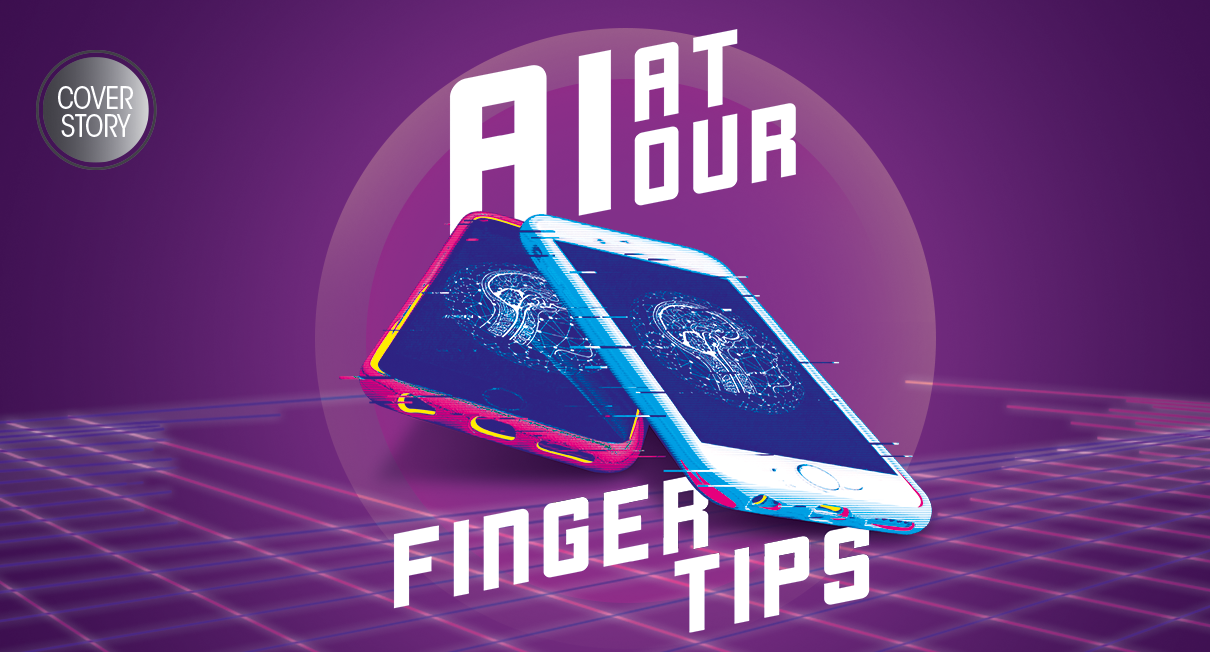Artificial Intelligence or AI might be a complex and overwhelming subject to discuss, but it’s not quite at the level of autonomous robots and rogue computer programs that science fiction might have described. Many have thought that the technology is too early for primetime but might want to rethink their stand. We can see it now almost everywhere from vehicles to smartphones, and its learning capabilities have become a vital key in improving one’s lifestyle and productivity.
Mobile devices can now think, learn, and function according to the behavior of the users. This allows us to forget about the little adjustments and details, and focus more on the task at hand.
Smarter cameras
Single cameras are out, dual camera sensors are in. Doubling the power of smartphone cameras, various brands have focused on enhancing camera features like subject detection, automatic scene recognition, and intelligent beauty mode essential for capturing IG-worthy shots. This enables average consumers to simply point and shoot special moments with their phones, and still achieve spectacular results.
As the name suggests, subject detection figures out what you’re shooting and changes the camera’s settings accordingly. Photography enthusiasts and beginners usually enjoy this feature since it makes the whole process simpler, without sacrificing results. When in the past, taking picture-perfect group photos with poor lighting was a struggle, AI and modern camera sensors now can adapt to conditions to deliver near DSLR-level images. Another great example of this is the incorporation of a bokeh effect for a more dramatic image.
Intelligent beauty mode, facial unlock, and 3D cameras are also some of the fads that smartphone manufacturers have incorporated in their latest devices. Oppo is one of the firsts to introduce it in 2017 with the F5 and further refined it last year with its mid-range F9. Equipped with AI cameras, intelligent beauty mode delivers more natural-looking selfies that highlight strong points on your facial features. For fast and reliable facial unlock, most camera sensors have highly-advanced optics that can map out facial points swiftly. With the Stealth 3D cameras from Oppo Find X, users may share and take 3D images useful for creative reference.
AI-centric hardware and IoT
From cameras, we jump back to the heart of every device: its internal hardware. There’s a lot of magic going on behind a unit’s sleek and ergonomically designed body. With machine learning, processors are able to predict and optimize the phone’s overall performance through AI-focused SoCs (system on chip) on smartphones and tablets.The collection of real-time data based on the most-used apps and mobile games, duration of usage, energy consumption, and graphics settings are essential to translate this technology into reality.
Honor recognizes this potential, paving the way with devices like the Honor Play. Through GPU Boost technology, gamers can dramatically improve their mobile gameplay experience by increasing processor performance when games are launched. Some phones even determine a game is being played, blocking calls, texts, and other notifications to prevent unwanted lag during the game. Out of the box AI management is also now offered by most devices, maximizing control and allowing seamless multitasking for busy users.
Smartphones have become an all-in-one device people can use as a remote control for their IoT devices. All it takes is a stable internet connection to perform actions from outside the home, like turning off lights in your bedroom. From smart LED lights, cameras, power switches, and other smart home devices, remote home control, and even home automation is no longer a sci-fi dream. Made possible by deep learning algorithms, your smartphone collects real-time data from the connected smart home system through a dedicated mobile app.
User interfaces (UIs) are more neat
For people who are always on-the-go, less is more. A redesigned, user-friendly interface is the logical companion to a phone with top-tier specs. Virtual assistants are also developed to make tasks simpler, and give information relevant to each individual user. By understanding their users’ needs, these AI-powered virtual assistants can decide and suggest solutions when users converse with them. Top virtual assistants pre-installed on phones—Apple’s Siri, Samsung’s Bixby, and Google’s Assistant—remind users of appointments and events, play music, give weather updates, read text messages while driving, call people via voice commands, and perform web searches. Powered by an AI bionic chipset with Apple’s Neural Engine, the third generation iPad Pro boasts advanced functionalities, and AR abilities to boot.
AI also prolongs battery life through machine learning. By recording the usage patterns, phones can properly allocate resources to more frequently used apps, shutting others down earlier to save power.
Guiding consumers to perform their tasks with accuracy, AI is just beginning to do things to help make our lives easier. It opens up a world of possibilities which can be a key in upgrading the way we live.

Also published in GADGETS MAGAZINE February 2019 Issue.
Words by Jewel Sta. Ana
